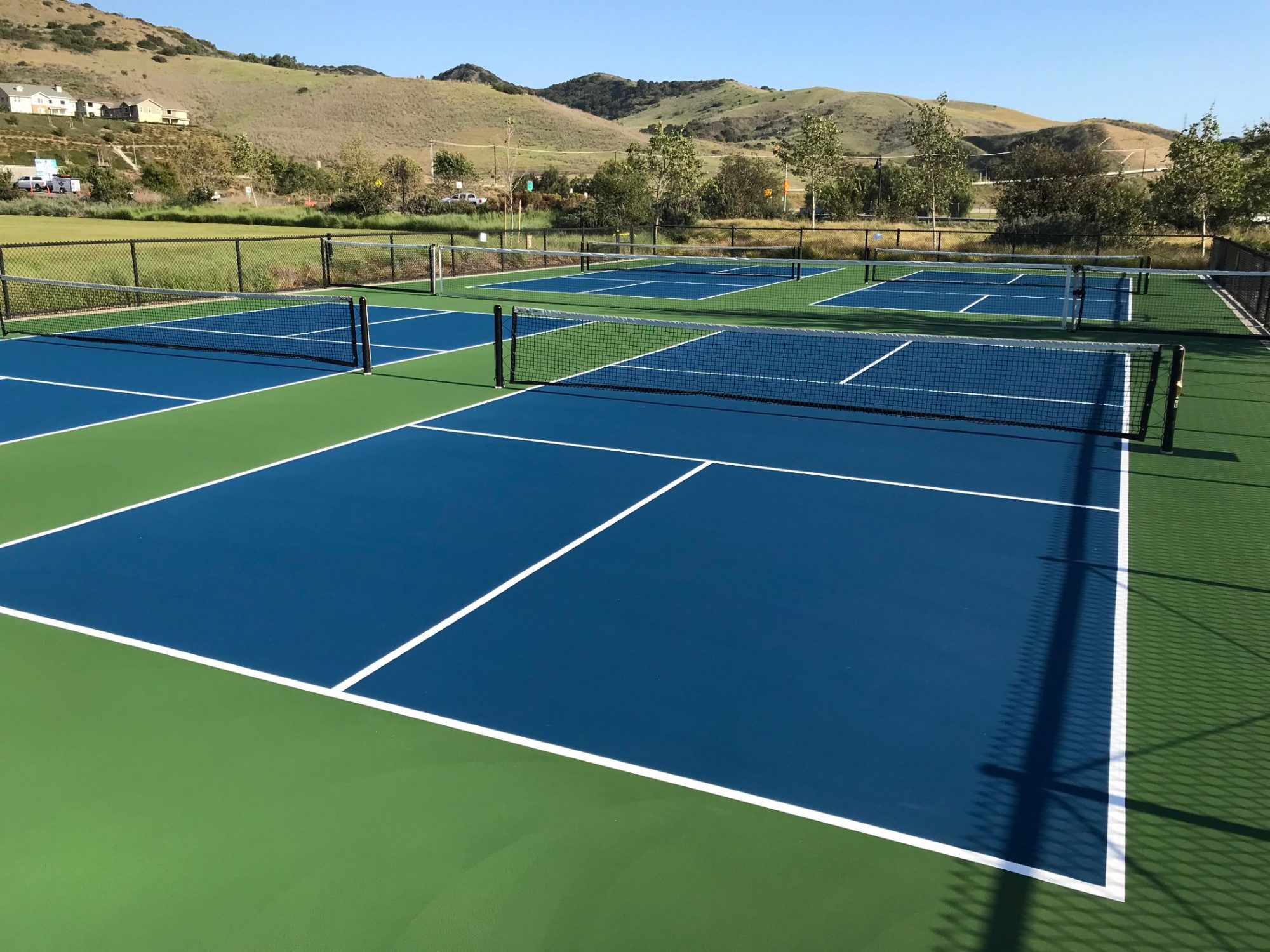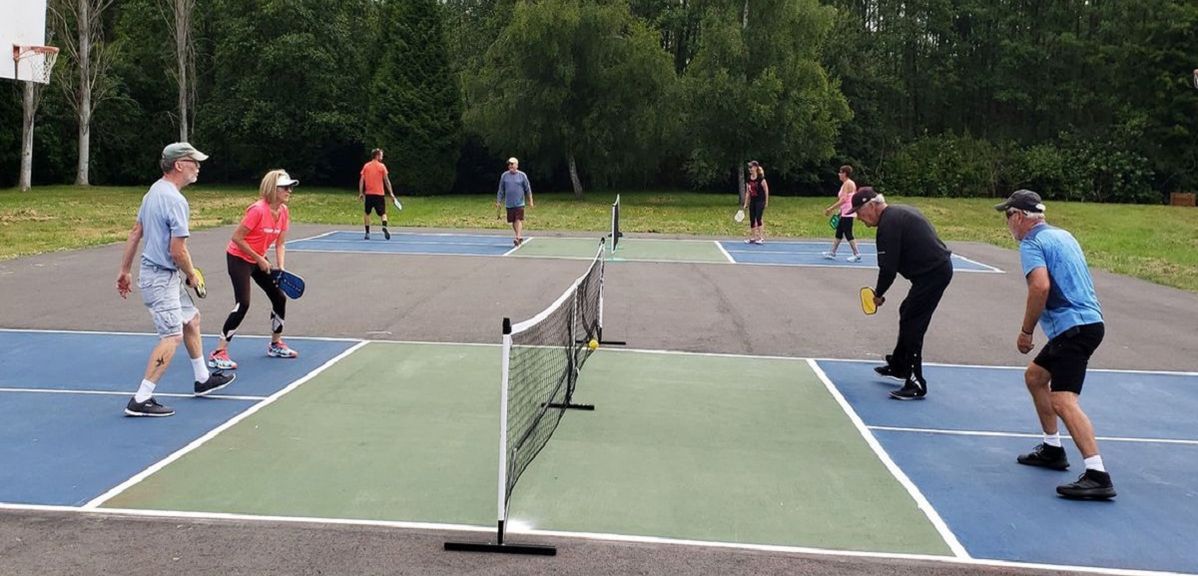How Local Rules Impact Your Pickleball Court Construction Plans
Navigating Rules for Pickleball Court Building And Construction in Your Area
Creating a pickleball court in your area needs a nuanced understanding of various neighborhood policies, consisting of zoning regulations, building authorizations, and safety criteria. Engaging with regional authorities and the community is vital for guaranteeing conformity and cultivating assistance.
Recognizing Local Zoning Legislations
When taking into consideration the building of a pickleball court, understanding local zoning regulations is important to ensuring compliance and preventing prospective lawful concerns. Zoning guidelines dictate just how land can be made use of and typically include requirements pertaining to entertainment facilities. These laws can vary dramatically by municipality, impacting aspects such as court positioning, sound, size, and lighting levels.
Before initiating building, it is essential to speak with the regional zoning board or planning division to determine the certain guidelines that use to your property. Certain zones may limit entertainment tasks, while others might call for certain licenses or adherence to specific standards. It is additionally vital to take into consideration troubles, which establish how much frameworks should be from home lines or other buildings.
Additionally, private growths, such as house owner associations (HOAs), may impose their own regulations concerning the building and usage of pickleball courts. Comprehending these guidelines can protect against expensive modifications or lawsuits down the line. Involving with regional stakeholders and community participants can supply valuable understandings and foster support for your project, guaranteeing that it aligns with the community's demands and expectations.
Acquiring Necessary Building Permits
How does one navigate the intricacies of obtaining required building permits for a pickleball court? The procedure starts with understanding regional policies and needs stated by local authorities. Commonly, you will require to send a thorough site plan that lays out the recommended court measurements, materials, and design. This strategy should follow zoning laws and any type of details policies referring to entertainment centers.

Once authorizations are gotten, it is essential to stick to any kind of evaluation schedules and demands throughout the construction stage. Keeping interaction with neighborhood authorities will certainly promote a smoother authorization process and help prevent potential problems. By extensively preparing and recognizing the permitting landscape, you can effectively browse the complexities involved in constructing a pickleball court while remaining certified with all regional guidelines.

Assessing Environmental Impact
A detailed evaluation of ecological effect is important when planning the building of a pickleball court. This evaluation aids identify prospective impacts on regional communities, water resources, and area appearances. Trick aspects to consider include site selection-- making sure that the court is not improved environmentally sensitive land, such as wetlands or environments for threatened varieties
Dirt security and drainage patterns need to be assessed to avoid disintegration and water pooling, which might negatively impact surrounding plants and wild animals. In addition, the selection of products is vital; choosing environment-friendly and sustainable alternatives decreases environmental harm.
The implementation of efficient stormwater management practices is another important aspect, as it helps alleviate drainage and sedimentation. Involving with regional environmental companies can supply beneficial understandings right into guidelines and finest practices particular to your area.
Lastly, community input can be beneficial in recognizing any kind of neighborhood ecological worries and promoting assistance for the task. By carrying out a complete environmental impact analysis, stakeholders can guarantee that pickleball court building and construction straightens with sustainable techniques and contributes positively to the area's eco-friendly wellness.
Abiding By Security Standards
Making certain conformity with safety requirements is vital for the successful construction and procedure of a pickleball court. Abiding by established safety and security guidelines minimizes the threat of mishaps and injuries, making sure a protected environment for players.
Key safety requirements include proper court measurements, surface area products, and lights demands. The court has to satisfy the official measurements of 20 feet vast by 44 feet long for doubles play, with appropriate buffer areas to stop injuries from wayward spheres. Pickleball court construction. The surface area should be built from non-slip materials to improve grip and minimize the likelihood of drops
Furthermore, lights must suffice for night play, providing consistent illumination to prevent shadows that can hinder presence. Local building ordinance might likewise dictate certain needs for fencing and web elevation to guarantee gamer safety and stop unapproved accessibility to the court area.
Normal examinations and maintenance are important to copyright these standards with time. By prioritizing safety compliance, court owners not just protect players however additionally cultivate a positive online reputation within the community. This commitment to safety can motivate greater involvement and pleasure of the sporting activity, eventually adding to its development and sustainability.

Involving the Community in Preparation
Neighborhood participation in the planning stages of pickleball court building and construction can significantly boost the task's overall success. Engaging regional residents and stakeholders promotes a sense of possession and urges collaborative decision-making, which can bring about more comprehensive support for the campaign.
To successfully include the area, organizers need to launch public conferences or workshops, giving a platform for homeowners to voice their point visit site of views and preferences regarding location, style, and services. Surveys and feedback types can likewise be used to collect understandings from a larger target market, making certain that varied viewpoints are considered.
Additionally, forming a neighborhood advisory board can help with ongoing conversations and address problems throughout the preparation procedure. This board can include representatives from numerous demographics, such as local institutions, recreational organizations, and neighborhood organizations, thereby amplifying community depiction.
Efficient communication is key; updates about the project need to be regularly shared using e-newsletters, social media sites, or neighborhood publications. By prioritizing area involvement, organizers can cultivate excitement, alleviate possible opposition, and produce a pickleball facility that absolutely resonates with neighborhood values and demands. This joint technique not only improves the job but additionally enhances area connections.
Conclusion
In conclusion, navigating the intricacies of pickleball court building demands a comprehensive understanding of regional laws, including zoning regulations, structure permits, and security requirements. By sticking to these standards and fostering partnership, effective implementation of pickleball courts can be attained, promoting leisure opportunities and you could check here community well-being.
Building a pickleball court in your area requires a nuanced understanding of numerous neighborhood laws, consisting of zoning laws, building authorizations, and safety and security requirements.When thinking about the building and construction of a pickleball court, recognizing local zoning laws is important to ensuring compliance and avoiding potential lawful issues. By thoroughly preparing and understanding the allowing landscape, you can efficiently navigate the complexities entailed in creating visite site a pickleball court while continuing to be certified with all neighborhood guidelines.
In final thought, navigating the complexities of pickleball court building and construction demands a thorough understanding of regional policies, including zoning legislations, building permits, and safety criteria. By sticking to these standards and cultivating partnership, successful execution of pickleball courts can be attained, promoting recreational opportunities and community wellness.